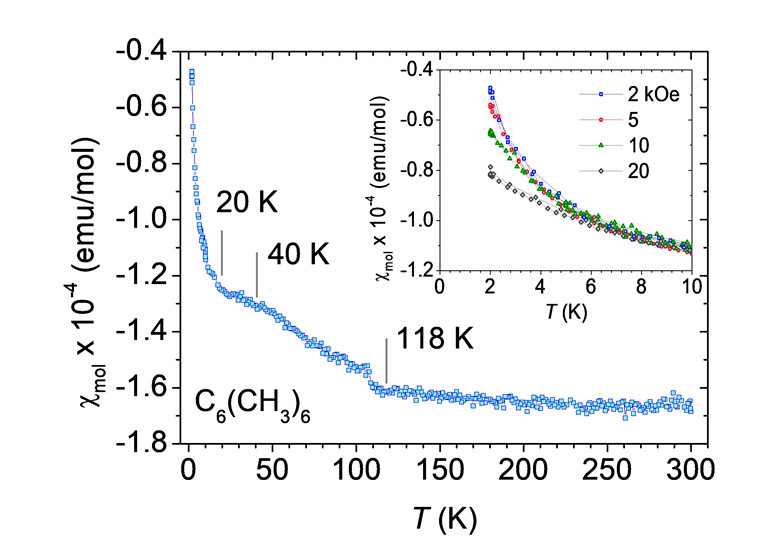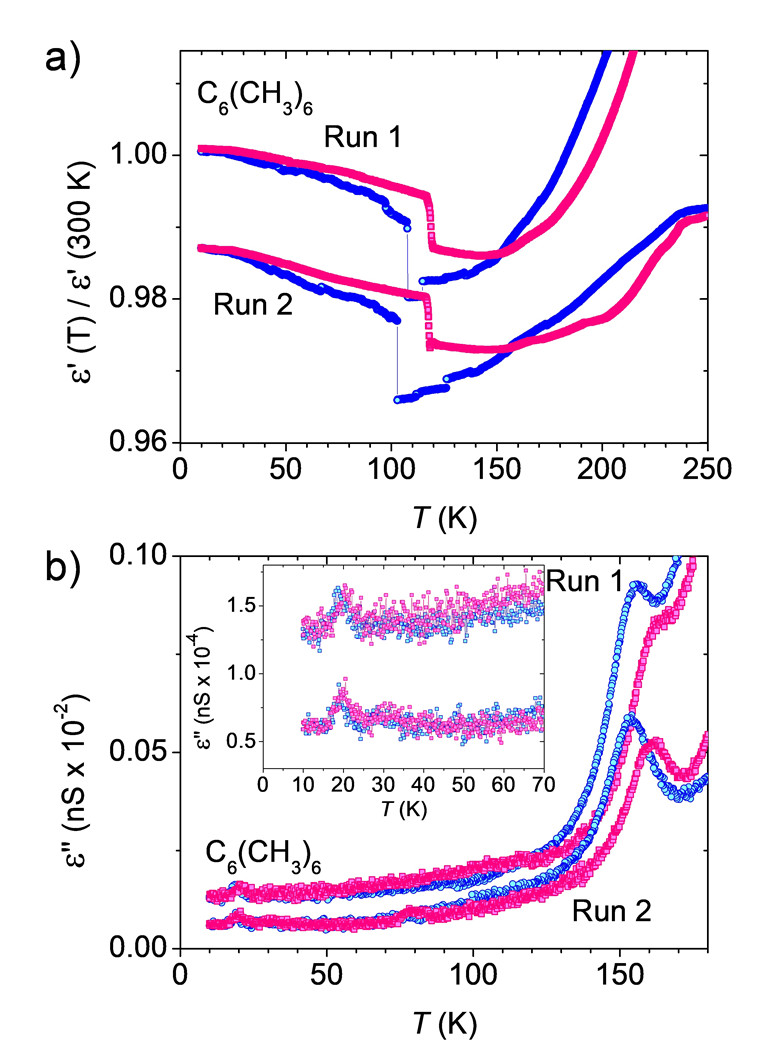Researchers make breakthrough in magnetic geometry-induced quantum geometry and nonlinear transport
2025-06-06SUSTech hosts IOP Forum with President of Institute of Physics Sir Keith Burnett
2025-03-26Researchers discover unusual thermal conductivity in high-symmetry single crystals
2025-03-26New efficient method detects quantum temporal correlations
2025-03-26Researchers explore unconventional magnons predicted by spin space groups
2025-03-25Dr. Fei YEN from the Department of Physics and colleagues at the Southern University of Science and Technology (SUSTech) have identified a new form of magnetism in the organic molecular solid hexamethylbenzene. All types of magnetism either stem from the motion of electrons and/or possess an inherent nuclear magnetic moment. The magnetism discovered here is quite unconventional as it is based on the rotational motion of protons within the methyl groups of each individual molecule. The enclosed Figure 1 depicts the spin configuration of the methyl groups which also classifies it as a previously unidentified type of a quasi-antiferromagnetic configuration with inherent magnetic frustruationfrustration. The phenomenon has been identified to occur as high as 117 K (or -156 C), see Figure 2. The findings are significant as a new type of magneto-dielectric coupling has been uncovered (Figure 3) which is highly pertinent to researchers working on next generation multiferroic memory devices. The strongly correlated system exhibits features of macroscopic quantum phenomenon which may be applicable to qubit storage within methyl spins. Moreover, the reported findings may enable the fabrication of molecular rotors or nano-machinery controllable by applied magnetic fields. The results have been published in Angewandte Chemie as a Very Important Paper (VIP) at http://onlinelibrary.wiley.com/doi/10.1002/anie.201707024/full
The works are kindly supported by MOST, NSFC, Shenzhen City, Nanshan District as well as SUSTech.

Figure 1: Top left: Hexamethylbenzene, or C6(CH3)6, projected along the [1,1,1] direction in the near cubic phase (below 117 K). Bottom: Basal planes form along the direction perpendicular to the [1,1,1] direction. Top right: Illustration of the protons (H+) undergoing rotational motion within each of their respective methyl groups (CH3). Blue arrows represent the magnetic moment associated to the rotational movement of the protons.

Figure 2: Molar magnetic susceptibility χmol as a function of temperature under an applied magnetic field of H=2 kOe. Above the near cubic to trigonal phase transition temperature Tc=118 K, χmol is temperature independent. Below Tc, the gearing motion of the protons render χmol to increase with decreasing temperature. Near 20 K, χmol diverges suggestive of an onset of long-range ordering of the magnetic moments of the Me groups in a quasi-antiferromagnetic configuration. Inset:

Figure 3: Top: Real part of the dielectric constant of HMB at 1 kHz, step-down feature at 118 K during warming represents the near cubic to triclinic structural phase transition. Bottom: Imaginary part of the dielectric constant, units in nanoSiemens. Peak near 160 K represents the increase of the periodic potential barrier restricting the molecules to rotate as a whole about their hexad axes. Inset: The sharp peak near 20 K appears to be a first-order phase transition where χmol also begins to diverge.